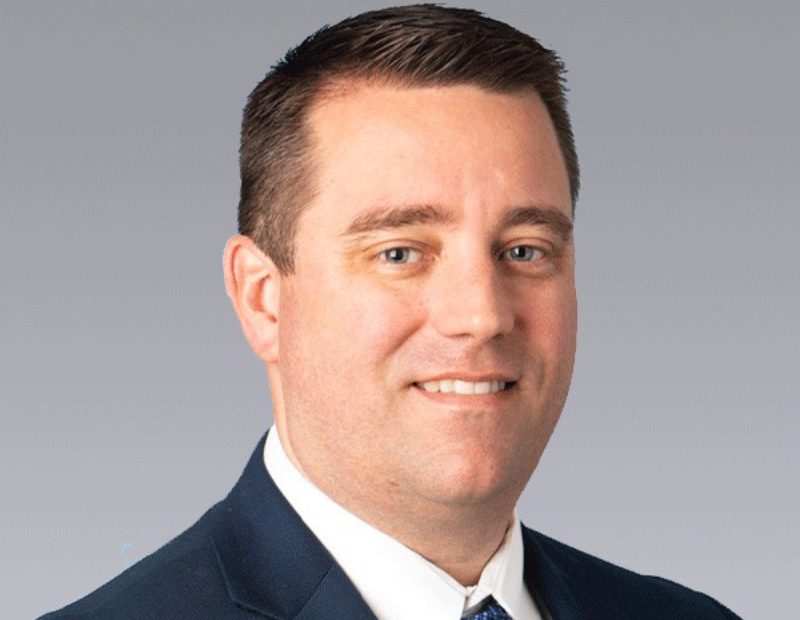Capital Ideas: The Man to Watch
All eyes are on Fed Chair Jerome Powell—and not just today. His influence on CRE is far-reaching.

In the stock market, the man to watch is still Warren Buffett. He is no longer the richest person in the world. Elon Musk, Jeff Bezos and a handful of others have surpassed him. But his no-nonsense approach to investing makes his corporate picks and putdowns daily news, and his outlook on the economy has become a bellwether worldwide.
In the real estate capital markets, the man to watch currently is Fed Chair Jerome Powell. Today, at the close of the FOMC’s two-day meeting, Powell will approach the podium and, in his serious but measured manner, give his verdict on the Fed Funds Rate: up, down or hold?
It is unlikely that Powell will raise rates. Inflation in February was 3.2 percent. Higher than January’s 3.1 percent but still in reach of the 2 percent target. And a drop in rates is not expected until the June announcement—after the Fed has collected more quarters of positive inflation data. Therefore, he is probably going to hold the Fed Funds Rate at 5.25 percent to 5.50 percent.
READ THE LATEST: Interest Rates Remain the Same. What Will 2024 Bring?
But what people will be watching for is the signal. If he raises his eyebrows and speaks optimistically of the economy, which he did in February, the fretting over interest rates will calm further and the flicker of momentum currently lifting CRE—the cost of capital is inching down and spreads are tighter—will be fanned.
If he furrows his brow and speaks of growing fiscal concern, however, that will be “just as good as an increase,” CREFC’s Lisa Pendergast told me recently, and then CRE’s waiting game will continue. (Kind of like the groundhog, but the comparison to Warren Buffett is more dignified for a dedicated public servant and one-time investment banker.)
Chairman Powell’s expansive reach

Powell’s opinion on the economy and interest rates is just one way he’s been impacting the flow of capital to real estate. Two weeks ago, in his annual address to Congress, Powell said the Fed was easing its stance on the Basel 3 Endgame banking reforms proposal, and he didn’t rule out redrafting the plan.
Under the current proposal, banks and non-bank lending institutions with assets of under $100 billion will have to set aside increased reserves when making commercial real estate loans. That would impact funding flows from big institutions and have a chilling effect throughout the CRE lending universe. Thus, the blowback has been considerable.
“First, we do hear the concerns, and I do expect there will be broad and material changes to the proposal,” Powell told the Congress. “I’m confident that final product will be one that does have broad and material support at the Fed and in the broader world.”
That was welcome news for CRE executives, and it was a confidence boost. But during his trip to the Hill, Powell also foreshadowed the potential fate of small and mid-sized banks with high concentrations of real estate loans, some of which are also heavily reliant on uninsured deposits. He said the Fed is working with these institutions, but there will be some failures in that corner of the capital markets. Those comments have ignited talk of consolidation.
READ ALSO: When Smaller Lenders Retreat
A week later, the Fed announced it was ending its Bank Term Funding Program, which was established following the collapses of Signature Bank, Silicon Valley Bank and a few other regional banks to ensure banks would have adequate funds to service their depositors.
Indeed, there are more than 4,000 community banks and around 130 regional banks. Can they all make it alone as oodles of CRE loans come due in the next couple of years? Probably not. This month, after losing 7 percent of its deposits in February due to concerns over their real estate loans, New York Community Bank announced a more than $1 billion equity investment from a group of investors led by former U.S. Treasury Secretary Steven Mnuchin’s Liberty Strategic Capital, Hudson Bay Capital and Reverence Capital. And there will likely be similar investments.
Smaller banks serve an important function. The local business that wants to expand their footprint or the regional mortgage broker who’s built a thriving business arranging the bread-and-butter loans would probably like to see most survive in their current form.
Powell, of course, does not bear the burden of steering U.S. financial markets alone. But as the chair of the 12-member FOMC, he is the bearer of all news—good or bad. And therefore, he has become a living benchmark of commercial real estate’s financial health. He has also been assigned the blame, by some, for raising rates 11 times since the second quarter of 2022. (It bears mentioning that Powell’s announcement will have a big impact on the stock market today, as well—bigger than Warren Buffett for the moment.)
So, Groundhog Day was already more than six weeks ago, and spring is finally here, but let’s still hope that Chairman Powell doesn’t see his shadow today.







You must be logged in to post a comment.